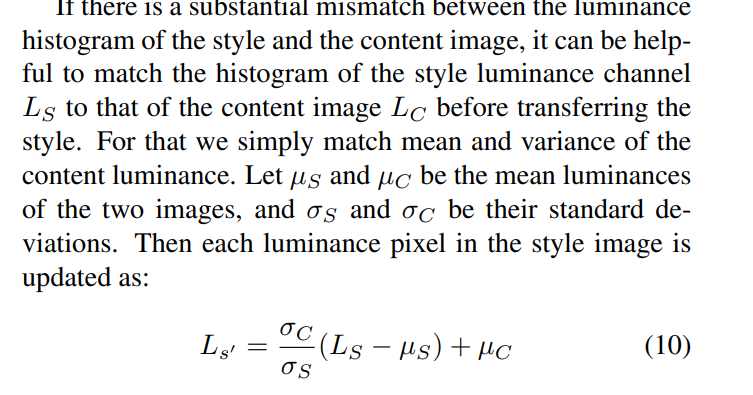hello there and happy new year to all the gmic people !
when doing style transfer it’s very convenient to do “linear color transfer” operations between content and style.
The algorithm is described in Leon Gatys paper here : https://arxiv.org/pdf/1611.07865.pdf
The original code is here : NeuralImageSynthesis/ScaleControl.ipynb at master · leongatys/NeuralImageSynthesis · GitHub
i’m using this python script to perform the transfer : Neural-Tools/linear-color-transfer.py at master · ProGamerGov/Neural-Tools · GitHub
i was wondering if this operation is available or doable with gmic as it would simplify my workflow enormously.
Best
Luc





